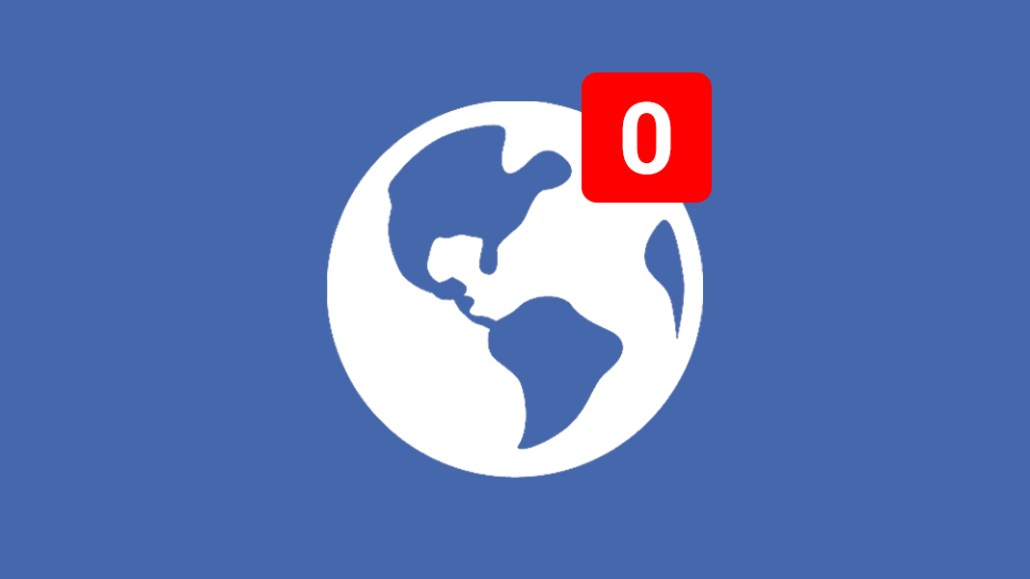2018 could be the year Facebook banishes news from its feed

Publishers have a lot to gripe about when it comes to Facebook, from the platform choking off their referral traffic, dominating digital advertising and giving them whiplash with its constantly changing video strategy. But what if it got even worse?
In 2018, Facebook could take a step further and separate news from the news feed. It’s not a crazy idea. The platform tested a newsless news feed, called the Explore Feed, in six countries outside the U.S., causing a major publisher freakout. (Facebook said it didn’t expect to roll out the test further.) In the past year, Facebook also launched Watch, a TV-like video tab; and prioritized Facebook Groups, communities for people who share interests or characteristics — also underscoring the idea of separating user interaction from other media content.
Other platforms have made moves to separate users’ messages from media and brands’ content. Snapchat redesigned its app to separate users’ feeds from brands’ content. Instagram is testing a private messaging app, which would take peer-to-peer chat out of the main app. Twitter has its Moments tab, a dedicated home for news and entertainment stories.
Fundamental to the success of platforms like Twitter and Facebook is keeping users happy, and as such, they’re always running experiments to see if changes will get people to return more often and stay longer. Given a lot of news is negative or controversial, a feed with no news (unless it’s shared by a user) could be less contentious and more enjoyable for users. And another group that likes less controversy, of course, is another important Facebook constituency: advertisers.
“Sometimes people get really annoyed and confused when they’re reading about their cousin’s bar mitzvah or whatever and they see a very serious story afterward,” said Andrew Montalenti, CTO and co-founder of web analytics firm Parsely. “All of the platforms, what they’re really concerned about with fake news is that I think you kind of draw on a bank account of trust with the user. If you come across that stuff too much, you declare it to be a problem, and you stop using it. So they have to play this delicate balance — ‘We can’t show you too many ads or show you too much spammy content.’”
Another factor is the fake-news imbroglio that blew up in Facebook’s face in the past year, leading lawmakers to threaten regulation. Facebook responded by trying to police fake news, which has proved to be a challenge. Further de-emphasizing news or taking it out of the feed altogether is one way to deal with the problem.
As to the Explore test, Facebook said: “There is no current plan to roll this out beyond these test countries or to charge pages on Facebook to pay for all their distribution in News Feed or Explore.” That was cold comfort to those publishers who depend on the news feed to reach audiences, though. As much as Facebook has declined in reach, it’s still a significant source of traffic for many publishers, which have already seen their direct traffic from Facebook decline in recent months, if not years, as Facebook has prioritized users’ posts and video content in the news feed.
Some publishers whose audience strategy is closely tied to Facebook and follow the company closely are starting to consider the possibility of a newsless news feed. An executive at a traditional publishing company said this is “definitely on our minds” given the company gets a “ton of traffic from Facebook,” and it’s a risk the company has to think about in the next few years. “It would be seismic shift,” said another publishing exec.
“There’s good reason to be concerned if publishers’ content becomes separated out of the main news feed,” said Vivian Schiller, a former Twitter news executive. “Their criteria [for the Explore test] was about user experience. That’s their business. But it’s hard to imagine this not having a deleterious effect on publishers.”
There are other reasons for Facebook to go in this direction. Facebook could make an exception for publishers and other commercial content providers that pay to be in the news feed, which could mean more revenue for Facebook. Separating news from the feed also could give Facebook a way to test a potential new product, similar to how it took Messenger out of the site and made it its own app, Schiller said.
Of course, none of this is a fait accompli. There’s good reason to think Facebook will keep news in the feed. Scrolling through the news feed is the core daily habit for most Facebook users. It’s what Facebook uses to promote its many other products, like the Watch video tab and Marketplace. It’s hard to get people to toggle from the news feed to other places on Facebook.
That said, even if a newsless news feed doesn’t materialize, publishers have to adapt. Facebook, and Google, are here to stay, and Facebook has proven time and time again that it’s not always going to act in publishers’ interests. Publishers have to take matters into their own hands, and take advantage of other audience and revenue opportunities.
More in Media

WTF is behind the explosion of faceless creators?
Brands are rapidly increasing their spending on faceless creators, showing the unique benefits of working with this type of influencer.

In Graphic Detail: As ‘Grow a Garden’ booms, a new report shows the marketing power of Roblox
The explosive growth of “Grow a Garden” has brought new attention to Roblox — and rejuvenated marketers’ interest in its advertising power.

Brand deals surge for golf creators as the sport’s popularity spikes
Golf is booming, and so is influencer marketing. As a result, golf creators are signing an unprecedented number of brand deals in 2025.








